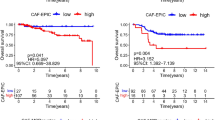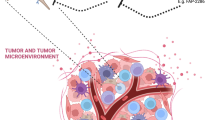Abstract
Purpose
Nectin-4 is selectively overexpressed in a variety of cancers and is currently under clinical investigation as a therapeutic target. A monoclonal antibody against nectin-4 (AGS-22M6) was evaluated as an Immuno-positron emission tomography (ImmunoPET) reagent. Its ability to assay nectin-4 expression as well as detect nectin-4 positive tumors in the liver and bone was evaluated using mouse models.
Procedures
The biodistribution of [89Zr]AGS-22M6 was evaluated in mice bearing tumors with varying levels of nectin-4 expression. An isogenic breast cancer tumor line was used to model metastatic liver and bone disease in mice. The biodistribution of [18F]AGS-22M6 in cynomolgus monkeys was evaluated.
Results
A positive correlation was demonstrated between tumor nectin-4 expression and [89Zr]AGS-22M6 uptake. Tumors in the liver and bone were detected and differentiated based on nectin-4 expression. [18F]AGS-22M6 showed limited uptake in cynomolgus monkey tissues.
Conclusions
[89Zr]AGS-22M6 is a promising ImmunoPET reagent that can assay nectin-4 expression in both primary and metastatic lesions.




Similar content being viewed by others
References
Samanta D, Almo SC (2015) Nectin family of cell-adhesion molecules: structural and molecular aspects of function and specificity. Cell Mol Life Sci 72:645–658
Mori M, Rikitake Y, Mandai K, Takai Y (2014) Roles of nectins and nectin-like molecules in the nervous system. Adv Neurobiol 8:91–116
Rikitake Y, Mandai K, Takai Y (2012) The role of nectins in different types of cell-cell adhesion. J Cell Sci 125:3713–3722
Athanassiadou AM, Patsouris E, Tsipis A et al (2011) The significance of survivin and nectin-4 expression in the prognosis of breast carcinoma. Folia Histochem Cytobiol 49:26–33
Takano A, Ishikawa N, Nishino R et al (2009) Identification of nectin-4 oncoprotein as a diagnostic and therapeutic target for lung cancer. Cancer Res 69:6694–6703
Fabre-Lafay S, Monville F, Garrido-Urbani S et al (2007) Nectin-4 is a new histological and serological tumor associated marker for breast cancer. BMC Cancer 7:73
Derycke MS, Pambuccian SE, Gilks CB et al (2010) Nectin 4 overexpression in ovarian cancer tissues and serum: potential role as a serum biomarker. Am J Clin Pathol 134:835–845
Challita-Eid PM, Satpayev D, Yang P et al (2016) Enfortumab vedotin antibody-drug conjugate targeting Nectin-4 is a highly potent therapeutic agent in multiple preclinical cancer models. Cancer Res. doi:10.1158/0008-5472.CAN-15-1313
Rizvi SN, Visser OJ, Vosjan MJ et al (2012) Biodistribution, radiation dosimetry and scouting of 90Y-ibritumomab tiuxetan therapy in patients with relapsed B-cell non-Hodgkin’s lymphoma using 89Zr-ibritumomab tiuxetan and PET. Eur J Nucl Med Mol Imaging 39:512–520
van de Watering FC, Rijpkema M, Perk L et al (2014) Zirconium-89 labeled antibodies: a new tool for molecular imaging in cancer patients. BioMed Res Int 2014:203601
Deri MA, Zeglis BM, Francesconi LC, Lewis JS (2013) PET imaging with (8)(9)Zr: from radiochemistry to the clinic. Nucl Med Biol 40:3–14
Nittka S, Krueger MA, Shively JE et al (2014) Radioimmunoimaging of liver metastases with PET using a 64Cu-labeled CEA antibody in transgenic mice. PLoS One 9:e106921
Sham JG, Kievit FM, Grierson JR et al (2014) Glypican-3-targeted 89Zr PET imaging of hepatocellular carcinoma. J Nucl Med 55:799–804
Dijkers EC, Oude Munnink TH, Kosterink JG et al (2010) Biodistribution of 89Zr-trastuzumab and PET imaging of HER2-positive lesions in patients with metastatic breast cancer. Clin Pharmacol Ther 87:586–592
Pandit-Taskar N, O'Donoghue JA, Beylergil V et al (2014) (8)(9)Zr-huJ591 immuno-PET imaging in patients with advanced metastatic prostate cancer. Eur J Nucl Med Mol Imaging 41:2093–2105
Mortimer JE, Bading JR, Colcher DM et al (2014) Functional imaging of human epidermal growth factor receptor 2-positive metastatic breast cancer using (64)Cu-DOTA-trastuzumab PET. J Nucl Med 55:23–29
Gerratana L, Fanotto V, Bonotto M et al (2015) Pattern of metastasis and outcome in patients with breast cancer. Clin Exp Metastasis 32:125–133
Bianchi M, Roghmann F, Becker A et al (2014) Age-stratified distribution of metastatic sites in bladder cancer: a population-based analysis. Can Urol Assoc J 8:E148–E158
Tamura T, Kurishima K, Nakazawa K et al (2015) Specific organ metastases and survival in metastatic non-small-cell lung cancer. Mol Clin Oncol 3:217–221
Green LL (1999) Antibody engineering via genetic engineering of the mouse: XenoMouse strains are a vehicle for the facile generation of therapeutic human monoclonal antibodies. J Immunol Methods 231:11–23
Ellman GL (1959) Tissue sulfhydryl groups. Arch Biochem Biophys 82:70–77
Tang G, Tang X, Wang X (2010) A facile automated synthesis of N-succinimidyl 4-[18F]fluorobenzoate ([18F]SFB) for 18F-labeled cell-penetrating peptide as PET tracer. J Label Compd Radiopharm 53:543–547
Wurdinger T, Badr C, Pike L et al (2008) A secreted luciferase for ex vivo monitoring of in vivo processes. Nat Methods 5:171–173
McCarty KS Jr, Miller LS, Cox EB et al (1985) Estrogen receptor analyses. Correlation of biochemical and immunohistochemical methods using monoclonal antireceptor antibodies. Arch Pathol Lab Med 109:716–721
Ray GL, Baidoo KE, Wong KJ et al (2009) Preclinical evaluation of a monoclonal antibody targeting the epidermal growth factor receptor as a radioimmunodiagnostic and radioimmunotherapeutic agent. Br J Pharmacol 157:1541–1548
Bhattacharyya S, Kurdziel K, Wei L et al (2013) Zirconium-89 labeled panitumumab: a potential immuno-PET probe for HER1-expressing carcinomas. Nucl Med Biol 40:451–457
Ikotun OF, Marquez BV, Huang C et al (2013) Imaging the L-type amino acid transporter-1 (LAT1) with Zr-89 immunoPET. PLoS One 8:e77476
Terwisscha van Scheltinga AG, Lub-de Hooge MN, Abiraj K et al (2014) ImmunoPET and biodistribution with human epidermal growth factor receptor 3 targeting antibody (8)(9)Zr-RG7116. MAbs 6:1051–1058
Niu G, Li Z, Xie J, Le QT, Chen X (2009) PET of EGFR antibody distribution in head and neck squamous cell carcinoma models. J Nucl Med 50:1116–1123
Mattie M, Christensen A, Chang MS et al (2013) Molecular characterization of patient-derived human pancreatic tumor xenograft models for preclinical and translational development of cancer therapeutics. Neoplasia 15:1138–1150
Fabre-Lafay S, Garrido-Urbani S, Reymond N et al (2005) Nectin-4, a new serological breast cancer marker, is a substrate for tumor necrosis factor-alpha-converting enzyme (TACE)/ADAM-17. J Biol Chem 280:19543–19550
Nayak TK, Garmestani K, Milenic DE, Brechbiel MW (2012) PET and MRI of metastatic peritoneal and pulmonary colorectal cancer in mice with human epidermal growth factor receptor 1-targeted 89Zr-labeled panitumumab. J Nucl Med 53:113–120
Divgi CR, Welt S, Kris M et al (1991) Phase I and imaging trial of indium 111-labeled anti-epidermal growth factor receptor monoclonal antibody 225 in patients with squamous cell lung carcinoma. J Natl Cancer Inst 83:97–104
Jadvar H (2012) Molecular imaging of prostate cancer: PET radiotracers. Am J Roentgenol 199:278–291
Beheshti M, Vali R, Waldenberger P et al (2008) Detection of bone metastases in patients with prostate cancer by 18F fluorocholine and 18F fluoride PET-CT: a comparative study. Eur J Nucl Med Mol Imaging 35:1766–1774
Even-Sapir E, Metser U, Mishani E et al (2006) The detection of bone metastases in patients with high-risk prostate cancer: 99mTc-MDP Planar bone scintigraphy, single- and multi-field-of-view SPECT, 18F-fluoride PET, and 18F-fluoride PET/CT. J Nucl Med 47:287–297
Knowles SM, Tavare R, Zettlitz KA et al (2014) Applications of immunoPET: using 124I-anti-PSCA A11 minibody for imaging disease progression and response to therapy in mouse xenograft models of prostate cancer. Clin Cancer Res 20:6367–6378
Author information
Authors and Affiliations
Corresponding author
Ethics declarations
Conflict of Interest.
The authors declare that they have no conflict of interest.
Electronic supplementary material
Below is the link to the electronic supplementary material.
ESM 1
(PDF 361 kb)
Rights and permissions
About this article
Cite this article
Campbell, D.O., Noda, A., Verlinsky, A. et al. Preclinical Evaluation of an Anti-Nectin-4 ImmunoPET Reagent in Tumor-Bearing Mice and Biodistribution Studies in Cynomolgus Monkeys. Mol Imaging Biol 18, 768–775 (2016). https://doi.org/10.1007/s11307-016-0953-x
Published:
Issue Date:
DOI: https://doi.org/10.1007/s11307-016-0953-x




